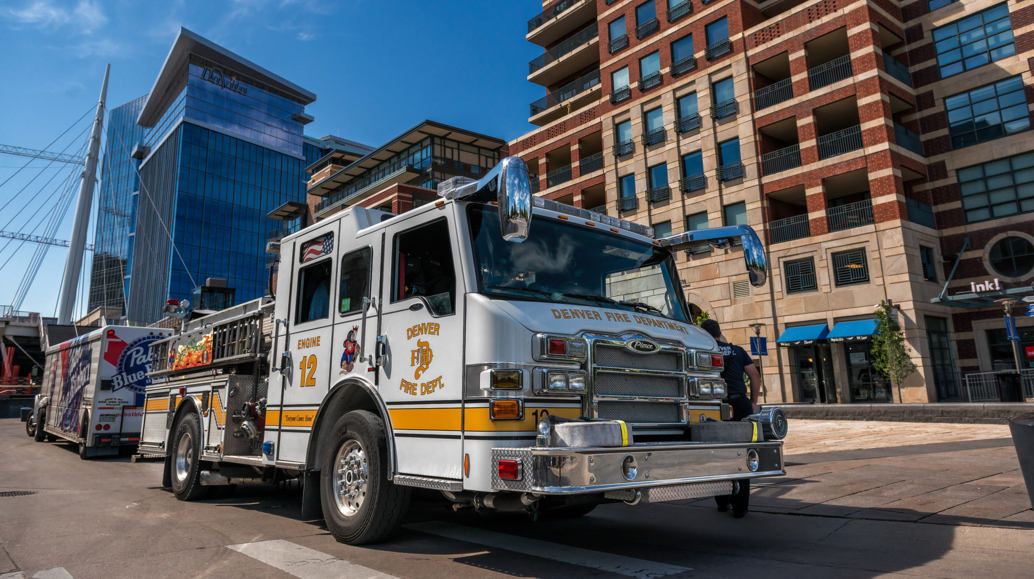Why Are Fire Trucks Dictating Street Design in Denver?

Slimmer streets and protected bike lanes are two great ways to calm traffic and make streets safer for everyone. But in a lot of American cities, these ideas meet resistance from an unexpected source: fire departments that insist on wide lanes to give their vehicles clearance. Denver is no exception.
The fire code is why a new bike lane on Champa Street won’t be parking-protected. It’s also why the MLK Boulevard widening project calls for lanes as much as 13 feet wide, even though that creates more risk that people will be hurt or killed in traffic. That’s the big irony — by insisting on wider roads in the name of emergency response, the fire department is essentially guaranteeing that there will be more emergencies to respond to.
Fire engines are so huge because they carry hundreds of gallons of water to fight fires. Yet only about 4 percent of emergency calls nationwide have to do with fires, according to the National Fire Protection Association. Firefighters respond to medical emergencies, including car crashes, far more often.
Doesn’t it make more sense for cities’ fire engine fleets to adapt to modern, urban street design than for streets to adapt to big, boxy trucks that aren’t even needed for most calls?
Retired fire chief Robert Avsec thinks so. In a piece for Fire Chief Magazine, Avsec says that if fire departments want to save lives and money, they need to rethink their equipment, which they often buy based on an arcane formula having to do with property insurance ratings called “ISOs.”
Writes Avsec:
Every fire department states that their first priority is life safety. So why do fire departments continue to chase the holy grail of lower property insurance rates for their community by improving their ISO rating? The pursuit of which has fire department leaders purchasing fire apparatus that might not meet its operational needs.
So if your department’s ISO rating is not as important as it was once thought to be, what’s holding your department back from designing fire apparatus specs that better meet your operational needs, save money, and can be driven down the streets in your city or town?
Linda Poon at City Lab also covered this subject recently. She pointed to a South Carolina fire department that saved money by rethinking its fleet, as well as an “urban fire truck” in Singapore that’s much nimbler than its American counterpart. It can snuff out fires in tight urban spaces and carry enough people and medical supplies to keep residents safe.
Poon writes:
In Singapore, the country’s civil defense force recently showed off a line of radical compact fire trucks, replacing the conventional box shape with more angles and looking more like a rugged SUV than a truck. Still, it has enough space to fit five people—a medical technician and four firefighters—and a compartment for all necessary medical equipment. It also has a “completely integrated compressed air foam (CAF) pump system,” according to Gizmag.
Designed for Singapore’s urban streets and the frequency of medical emergencies as opposed to fire event, the so-called “Red Rhino” fire truck shows there’s definitely room to think outside the big old red box.
Rethinking the conventional wisdom around Denver’s fire truck fleet would knock down a huge barrier to creating safer streets. If Mayor Michael Hancock is serious about eliminating traffic deaths, it’s something he should act on soon.


